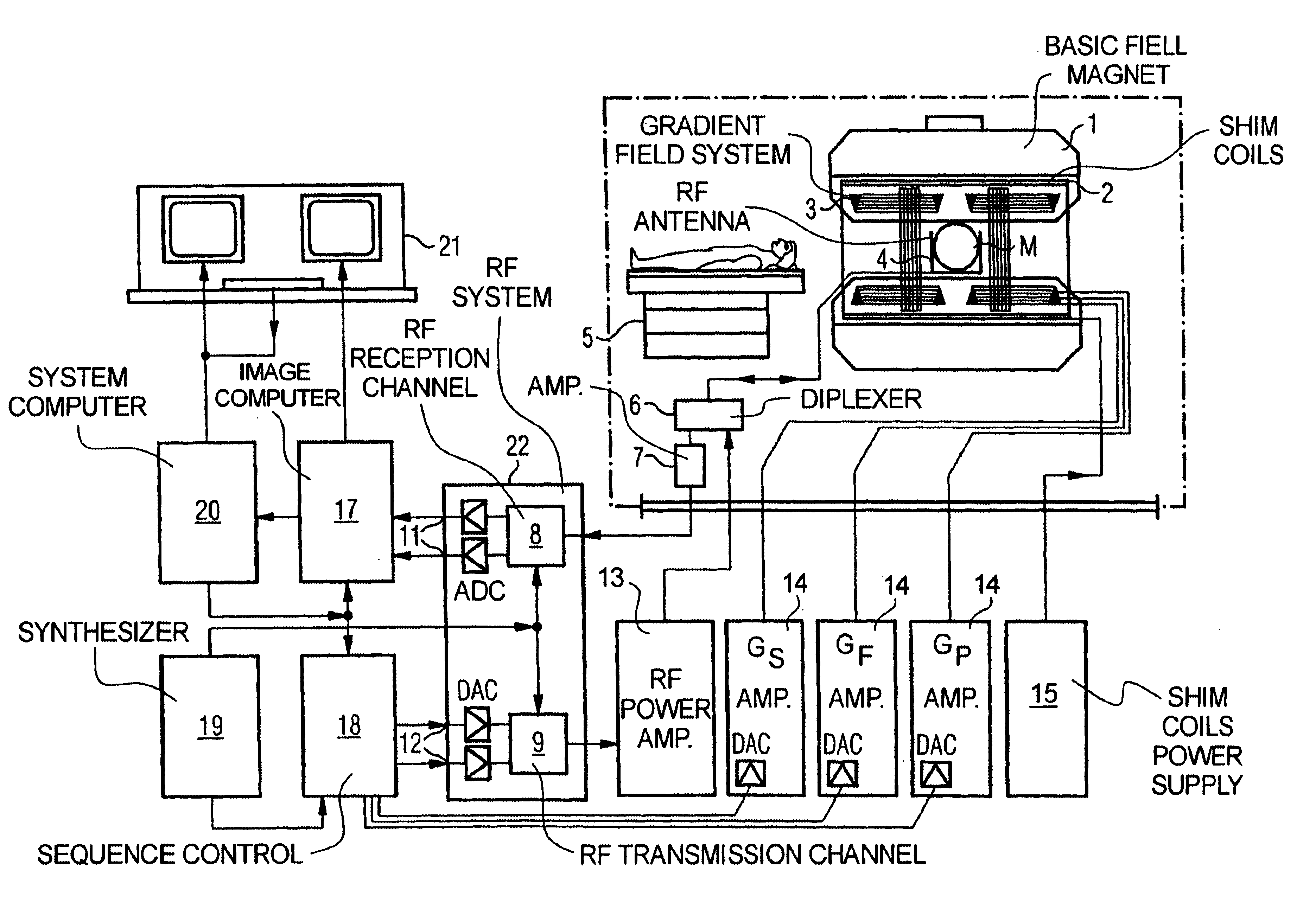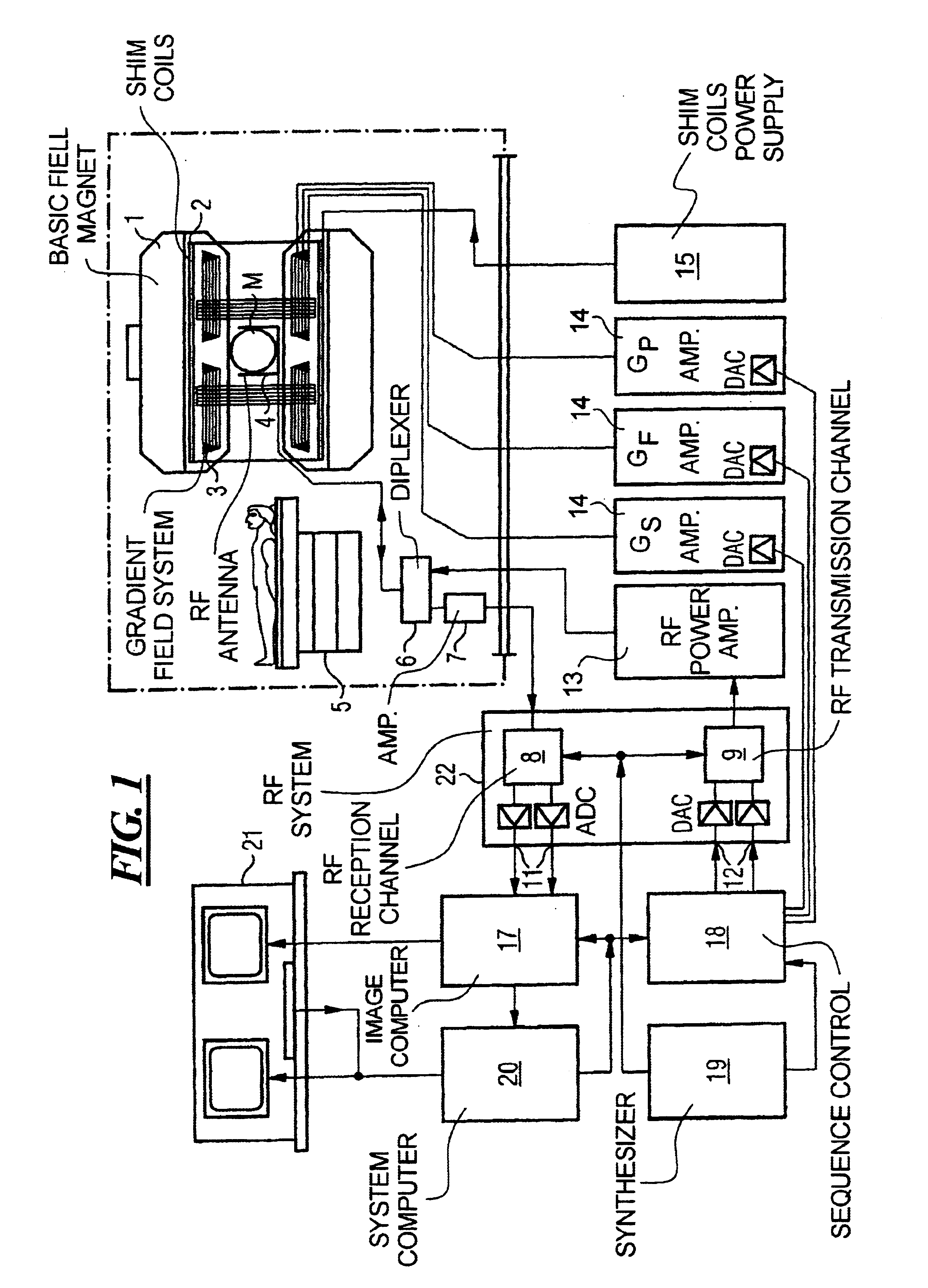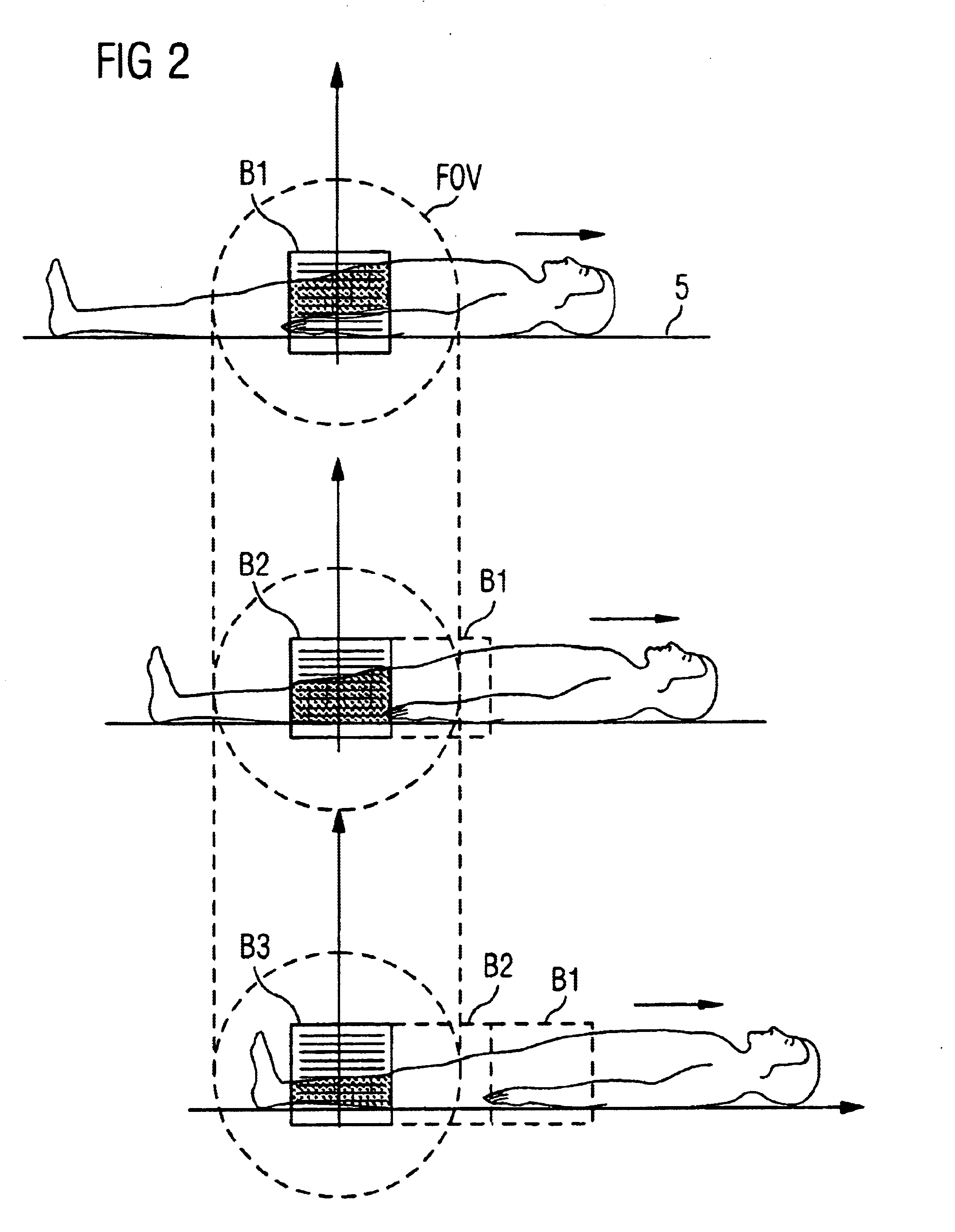Magnetic resonance imaging (MRI) with continuous table motion
a magnetic resonance imaging and table motion technology, applied in the field of magnetic resonance imaging, can solve the problems of inability to precisely monitor the gradual distribution of contrast agents, and inability to accurately monitor the distribution of angiographic images
- Summary
- Abstract
- Description
- Claims
- Application Information
AI Technical Summary
Benefits of technology
Problems solved by technology
Method used
Image
Examples
Embodiment Construction
FIG. 1 is a schematic illustration of a magnetic resonance imaging apparatus operable with an improved projection angiography acquisition technique according to the present invention. The arrangement of the components of the magnetic resonance imaging apparatus is the same as that of a conventional magnetic resonance imaging apparatus, but it is operable in a non-conventional manner, as described below. A basic field magnet 1 generates a strong, time invariant, basic magnetic field that polarizes, i.e., aligns the nuclear spins in the zone of the object, such as a part of the human body, to be scanned. The high degree of homogeneity of the magnetic field required for magnetic resonance imaging is defined within a sphere-like volume M, into which the relevant region of the patient's body must be brought. In order to meet the homogeneity requirements, and especially to eliminate any time invariant influences, the shim plates (made of a ferromagnetic material) are placed in suitable po...
PUM
 Login to View More
Login to View More Abstract
Description
Claims
Application Information
 Login to View More
Login to View More - R&D
- Intellectual Property
- Life Sciences
- Materials
- Tech Scout
- Unparalleled Data Quality
- Higher Quality Content
- 60% Fewer Hallucinations
Browse by: Latest US Patents, China's latest patents, Technical Efficacy Thesaurus, Application Domain, Technology Topic, Popular Technical Reports.
© 2025 PatSnap. All rights reserved.Legal|Privacy policy|Modern Slavery Act Transparency Statement|Sitemap|About US| Contact US: help@patsnap.com



